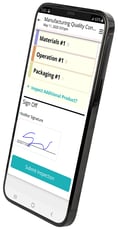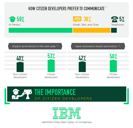 Maintenance management is one of the most critical but overlooked tasks in many organizations. For sectors like manufacturing, oil & gas, and utilities — as well as any company with a field services organization — maintenance is absolutely vital to a company’s health.
Maintenance management is one of the most critical but overlooked tasks in many organizations. For sectors like manufacturing, oil & gas, and utilities — as well as any company with a field services organization — maintenance is absolutely vital to a company’s health.
One of the best ways to perform better maintenance is to deploy a computerized maintenance management system (CMMS). Better yet is a mobile CMMS, given that much maintenance needs to be performed not in a central location with a desk or terminal, but in many different areas of a production floor, or out in the field.
Survey Data: Impact of a Mobile CMMS
A survey from Software Advice, Mobile CMMS Software UserView offers a great deal of insight and advice about how mobile CMMSes are being used, what you need in one, and more.
A Mobile CMMS Improves Worker Efficiency
Let’s start off with what may be the most important finding: Respondents find mobile CMMSes improve people’s efficiency. A full 43% say a mobile CMMS offers a significant increase in efficiency, with 28% reporting a moderate increase. Only 13% reported no increase, while 16% said they had seen a minimal increase.
The top benefit gained with a mobile CMMS is improved work order tracking, cited as the most important benefit by 42% of respondents. That’s followed by 21% who say it helps them make more informed decisions, 20% who say it increases productivity, and 17% who say it leads to decreased asset downtime.
 Mobile CMMS on Tablets Wins Over Smartphones
Mobile CMMS on Tablets Wins Over Smartphones
Workers use tablets more than they use smartphones for accessing a mobile CMMS, with 44% accessing one only on a tablet, 35% on a smartphone, and 21% on both.
People who use mobile CMMS on a tablet rather than on a smartphone say they’ve had the most increase in efficiency: 65% report a significant increase, versus 41% who use smartphones, and a little under 20% for those who use both.
The top benefit gained with a mobile CMMS is improved work order tracking, cited as the most important benefit by 42% of respondents. That’s followed by 21% who say it helps them make more informed decisions, 20% who say it increases productivity, and 17% who say it leads to decreased asset downtime.
Most Important Mobile CMMS Features
As to what users want in a mobile CMMS, 40% say the most important requirement is real-time data access on all devices, followed by 32% who say an easy-to-use interface is important, and 28% who point to full functionality on a mobile device.
Another critical factor is a mobile CMMS that can work even when Internet access isn’t available. This is a must-have feature in Department of Defense shops, in remote field locations or on shipping docks where connections are spotty.
 Most Used Mobile CMMS Features
Most Used Mobile CMMS Features
The most-used feature, by a slim margin, is inventory tracking, cited by 25% of users, followed by preventative maintenance, cited by 24%, then asset tracking (19%), predictive maintenance (17%), and work order management (15%).
Forms are the heart of a mobile CMMS system. When building mobile forms, it’s important that they be mobile-optimized, and not just replicate paper-based forms. They should leverage the powerful capabilities of mobile devices to make data collection faster and easier for workers. This might include date stamping, bar code scanning, image capture and markup, GPS location, auto-population of form data when appropriate, digital signatures, and more. The form should be customized to the needs of the particular task and be built for one-handed data entry.
The Right Partner for Your Mobile CMMS Solution
Alpha Software excels are crafting manufacturing solutions for these challenges. We have pre-built apps that can integrate with your existing systems and be customized for your specific needs.
Talk to us today and we'll get working on the right solution for you.
Powerful Manufacturing Apps for Inspectors, Engineers, Assemblers, and Production Teams
Gemba Walks • Workplace Audits • Non-Conformance Reports • Yellow Sheets • 5s Audits
Temporary Deviation Authorizations • Shortage Sheets • Supplier Defects Per Unit Reporting • ISO Certification
Workplace Wellness • Work in Progress Tracking • Inventory Management • Quality Management • and more.
Read the full Mobile CMMS Software UserView survey.
Additional Resources:








Comment